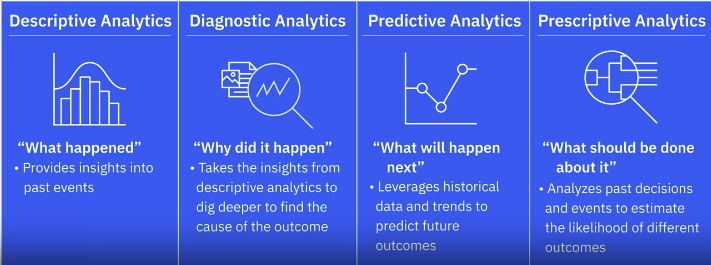Types of Data Analysis
Using data analysis, businesses can validate a course of action before committing to it. Saving valuable time and resources and also ensuring greater success. We will explore four primary types of data analysis, each with a different goal and place in the data analysis process.
Descriptive Analytics helps answer questions about what happened over a given period of time by summarizing past data and presenting the findings to stakeholders. It helps provide essential insights into past events. For example, tracking past performance based on the organization’s key performance indicators or cash flow analysis.
Diagnostic analytics helps answer the question. Why did it happen? It takes the insights from descriptive analytics to dig deeper to find the cause of the outcome. For example, a sudden change in traffic to a website without an obvious cause or an increase in sales in a region where there has been no change in marketing.
Predictive analytics helps answer the question, What will happen next? Historical data and trends are used to predict future outcomes. Some of the areas in which businesses apply predictive analysis are risk assessment and sales forecasts. It’s important to note that the purpose of predictive analytics is not. to say what will happen in the future, it’s objective is to forecast what might happen in the future. All predictions are probabilistic in nature.
Prescriptive Analytics helps answer the question, What should be done about it? By analyzing past decisions and events, the likelihood of different outcomes. Is estimated on the basis of which a course of action is decided. Self-driving cars are a good example of Prescriptive Analytics. They analyze the environment to make decisions regarding speed, changing lanes, which route to take, etc. Or airlines automatically adjusting ticket prices based on customer demand. Gas prices, the weather or traffic on connecting routes.
